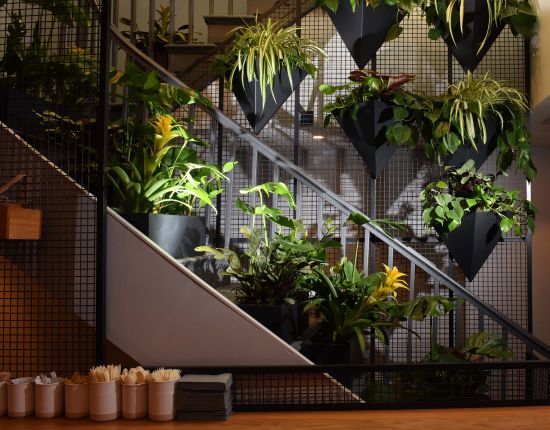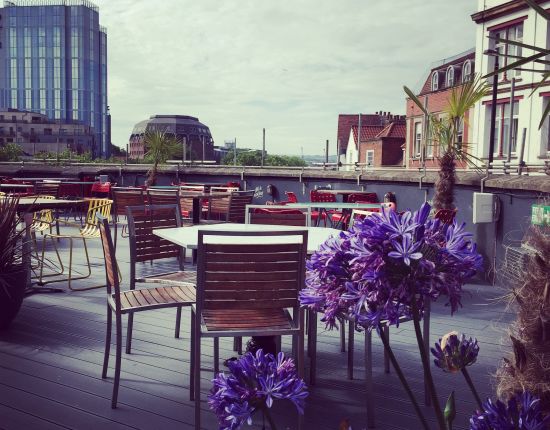Plants incorporated in restaurant designs
How do you introduce plants into a retail or eating environment in a way that is effective, yet unobtrusive and low maintenance?
That was our challenge for a new bakery on Bristol’s fashionable Park Street. Pinkmans Bakery is a fully licensed bakery-cum-cafe, serving breads, pizza, coffee and cakes for takeout as well as eating in, throughout the daytime and evening.
Plants are a big feature of the interior design of the establishment, which was developed by East London architects studio Holland Harvey. As well as a wide selection of hanging plants, Pinkmans Bakery also features a 2 square metre LivePanel internal living wall installation recessed into a wall in the dining area incorporating a pink neon ‘P’ nestling within the plants.
Established by London bakers Steven Whibley and Troels Bendix, who have previously been involved with Gail's Bakery and Le Pain Quotidien chain, the ethos of Pinkmans Bakery is about natural food and connecting with the environment, while delivering a unique experience for shoppers and diners.
We have installed a demo LivePanel wall at our HQ, so if you’re in the area or would like to learn more about green walls, please feel free to pay us a visit for some plant inspiration!
We've noticed a growing trend where new and younger architects are increasingly incorporating plants in their designs in interesting ways and in projects and environments where you would not expect to see them. A great example of this can be seen at Bambalan.
Bambalan is the latest opening from the team behind The Ox, Pata Negra, Milk Thistle and Hyde & Co. With a take on the current design trend for exposed ducting, concrete pillars and open kitchen, plants have been incorporated in subtle ways using macramé plant hangings and other retro features such a fantastic 70s bamboo plant screen!
And the plants don’t stop inside. Bambalan has one of the best roof terraces in Bristol and the plants are used to help connect the inside with the sunniest spot for drinks in town!





